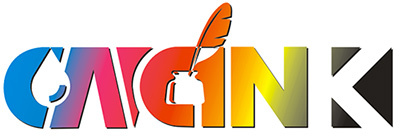The working principle of imitation embroidery ink technology
Release time:
2025-03-22
First, create or select a design in graphic software such as Adobe Photoshop. The design is then converted into a format suitable for printing and adjusted to ensure its smooth transfer onto the printing film.
Imitation embroidery ink technology:
Design Preparation
First, create or select a design in graphic software such as Adobe Photoshop. The design is then converted into a format suitable for printing and adjusted to ensure its smooth transfer onto the printing film.
Printing on Film
A DTF (Direct - to - Film) printer is used to print the design onto a special film with UV - curing ink. The printer deposits ink layer by layer, and by controlling the thickness of these layers, an embroidery - like texture is built up. Special software and printer settings enable textured printing, mimicking the look of embroidery threads such as satin, chain, or cross - stitches. Additionally, white ink can be used as a base layer to make other colors more vivid and enhance the raised effect.
Transfer to Fabric
The printed film is carefully placed on the fabric surface, and an adhesive layer on the film helps it stick to the fabric. A heat - press machine is then employed to apply heat and pressure, activating the adhesive layer to ensure a secure bond between the film and the fabric.
Finishing
After the heat - press step, the fabric is allowed to cool before the film is gently peeled off, leaving the printed design on the fabric. The finished product may undergo additional processes like washing or ironing based on the desired appearance and texture to achieve a more realistic imitation embroidery effect.
In the case of UV DTF technology, there is a double - layer heat - press process. The first heat press ensures the precise transfer and firm adhesion of the pattern, allowing the ink to fully penetrate the fabric fiber. The second heat press removes the glue layer by discharging the waste film, separating the glue layer on the transfer film from the fabric to make the texture of the pattern more prominent and simulate the three - dimensional and concave - convex sense of embroidery.
Recommended news


